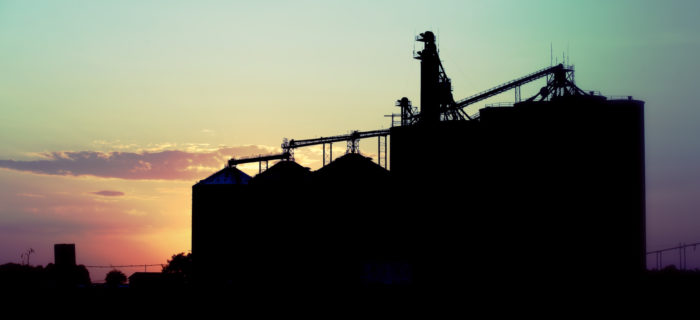Trade War with China: The Crisis (and the Solution) Behind the Hype
The US trade war with China and its impacts on agriculture have occupied a lot of media time. But none of this coverage has questioned our overproducing, export-dependent—and GHG-spewing—industrial model of food production. For some farmers, the trade war with China is just another corporate smokescreen hiding the destructive nature of our global food system.
US president Donald Trump has complained about China’s trading practices since he took office, citing a trade deficit between the two countries. In July of 2018, the Trump administration implemented a 25% tariff on 818 categories of imported goods from China. China then retaliated with its own 25% tariffs on 659 US products including soybeans, corn, and pork. Tariffs and counter tariffs have continued as talks flounder, affecting consumers, workers, and farmers who are now bracing for the impact of further rounds.
How destructive is this trade war? It depends on who you talk to. Soybean farmers in the Midwest complain their prices have tanked. But garlic farmers in California are experiencing a windfall with the increased demand for domestic garlic. Livestock producers are paying less for feed (because of low grain prices), but are exporting less meat to China.
Regardless of which specific products are “winning” or “losing” in the market, farm incomes in the Midwest and Southern states have declined overall since the tariffs, as have incomes for some specialty crop farmers on the West Coast. While an aid package in July 2018 and another one in May 2019 were introduced to compensate farmers, most of the money goes to the handful of industrial mega-farms rather than medium or small family farmers.
Unfortunately, the aid payments do nothing to address the primary problem plaguing industrial agriculture at home and abroad: overproduction.
While the world produces 1 ½ times more than enough food for everyone, this doesn’t solve hunger or malnutrition because nearly a third of the world’s population is too poor to buy enough food for a healthy diet.
But for farmers, overproduction in a “free” market drives the prices paid to them down. They are forced to produce even more, just to cover costs. This locks farmers into a production model that is dependent on ever expanding global markets and taxpayer-funded subsidies. Iowa farm leader George Naylor asserts:
Stay in the loop with Food First!
Get our independent analysis, research, and other publications you care about to your inbox for free!
Sign up today!“Farmers around the world suffer from cheap farm commodity prices in this ‘supply and demand system’ that is determined by an ever-growing global supply created by chemical company technology expanding production in the rainforests of Brazil and the grasslands of Argentina. These cheap prices are driving family farmers out of business forcing those remaining to also increase production to stay afloat.”
But imposing tariffs on a country doesn’t stop them from accessing or selling goods on the global market. It is entirely possible that China—now getting much of its imported grain from Brazil—is actually buying grain originating in the US. So, while farmers are seeing lower prices, grain companies are still profiting, regardless of the trade war.
This flawed system has led many farmers to revisit the idea of supply management. As Leah Douglas explains in Successful Farming Magazine:
“The building blocks of supply management are a floor price for commodities based on the cost of production, a commodity reserve that can be drawn upon in less fruitful years and contributed to in years of excess, and conservation programs that take agricultural land out of production. Those policies together could control how much of a commodity is being produced, stabilize prices for farmers, and ensure that consumer demand is met despite seasonal fluctuation.”
Supply management originally began in the U.S. as a set of policies in the first Farm Bill in 1933. However, policy shifts started to take place in the second half of the 20th century moving agriculture closer to a free-market approach. A critical step was in 1973 when Secretary of Agriculture Earl Butz told farmers to “get big or get out” and “plant fencerow to fencerow.” The move away from supply management culminated in 1996 with the closing of the U.S. grain reserve. Monoculture commodities have since exploded in conjunction with the growth of agribusiness corporations.
Despite this shift towards overproduction, many farmers are interested in supply management policies that ensure fair prices (parity) better protect them in an uncertain agricultural economy. Cranberries and sugar beets already have some supply management policies in place through the USDA, but the 2018 Farm Bill fell short of making any headway on expanding these policies.
Citing Canada’s successful supply management model, many farmers in the struggling U.S. dairy industry are calling for the same policies to confront plummeting milk prices. Supply management is included in Bernie’s recent Revitalizing Rural America platform as one of his policies “leveling the playing field for farmers and farmworkers.”
As farmers do their best to prepare for another year of volatile prices in the wake of environmental disasters and trade wars, we should look to systemic changes that rely not just on short-term, incomplete aid packages but on longer-term, more reliable policies of parity and supply management.
Cover Image: “Midwest Farming” by Carol VanHook (CC BY-SA 2.0).


 Help Food First to continue growing an informed, transformative, and flourishing food movement.
Help Food First to continue growing an informed, transformative, and flourishing food movement.




